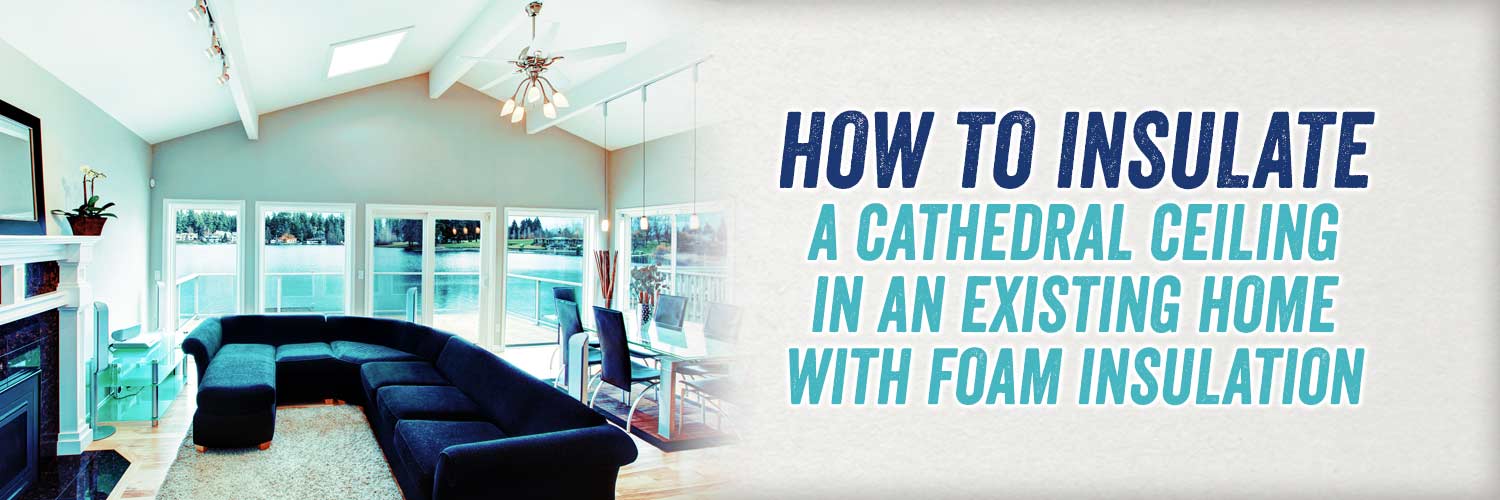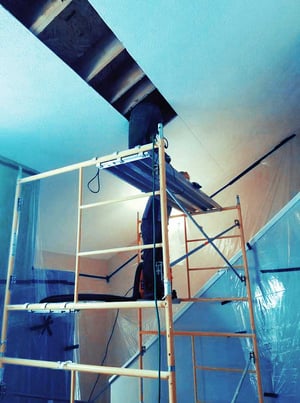How to Insulate a Cathedral Ceiling in an Existing Home with Foam Insulation


You’re tired of the air you pay to heat and cool escaping through your cathedral ceiling, so you’re ready to have foam insulation installed.
You know that foam is going to fix your problems, but you’re unclear on how the installation is going to go. Don’t sweat it, we’ve got you covered.
RetroFoam of Michigan has helped thousands of homeowners with their comfort and energy efficiency needs. With this experience, we know exactly how to insulate your cathedral ceiling in a way that you don’t have to worry about air leakage anymore.
We strive to educate homeowners, so in our continued efforts to get you all of the information you need, we are going to explain installing spray foam as your cathedral ceiling insulation.
How to Insulate a Cathedral Ceiling in an Existing Home
The best method to insulate a cathedral ceiling is with spray foam insulation.
The crew will cut panels and spray the foam.
While the installation process is somewhat invasive, spray foam insulation creates the air barrier you’re looking for to stop air leakage.
That doesn’t really specifically answer your question, so let’s really break this down.
How to Insulate a Cathedral Ceiling with Spray Foam
 Insulating the cathedral ceiling with spray foam requires a little more demo, but the installer is able to better see the foam expanding and filling the cavity.
Insulating the cathedral ceiling with spray foam requires a little more demo, but the installer is able to better see the foam expanding and filling the cavity.
Before the foam can be sprayed into the cavity, any existing insulation will need to be removed so the spray foam can adhere to the underside of the roof.
One- to two-foot strips would be cut through the middle of the stud cavities on either side of the peak. This way the installer can spray from the soffit up to the peak in each cavity.
Once the foam has been sprayed into the cavities, drywall is placed back over where the strips were cut and a rough patch of mud is spread over the seams.
Air Sealing Your Home
Once the foam is sprayed into your cathedral ceiling, you’ll notice a difference in the comfort level of your home.
No more air leaking through the roof. No more high energy bills.
Your home works as an entire system, so taking the jump to air seal the entire building envelope can make a huge difference. If you want to learn more about the benefits of foam insulation for the rest of your home, check out the Learning Center on our website.
About Amanda Emery
Amanda previously has worked as a breaking news and crime reporter, TV news producer, and editor in Flint and Detroit. Throughout her career as a journalist, she has won several awards from The Society of Professional Journalists - Detroit Chapter and the Michigan Press Association. As part of the RetroFoam of Michigan family, Amanda uses her experience as a journalist to write content that will help educate homeowners on the benefits of foam insulation. When Amanda isn’t writing, she’s spending time with her husband and rescued huskies. She also loves knitting, making art, cooking, and hosting dinner and a movie night for friends and family.


